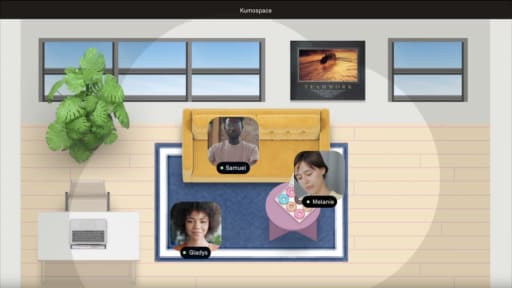Struggling to keep your team meetings productive and engaging? Finding the right topics for a meeting is crucial for driving meaningful discussions and improving team performance. The right agenda not only keeps conversations focused but also helps your team stay aligned, motivated, and informed.
In this article, you’ll discover a range of topics designed to support collaboration, focus, and overall productivity. Whether you’re looking to celebrate team wins, set clear goals, solve challenges, or generate new ideas, these topics will help you structure your meetings more effectively and create a more engaging experience for everyone involved.
Key Takeaways
- Start meetings by celebrating wins to boost morale and motivate team members.
- Set clear goals using structured frameworks like SMART to support accountability and team focus.
- Incorporate interactive elements such as brainstorming sessions and icebreakers to foster creativity and engagement.
Start with Wins

Opening a meeting by highlighting work wins sets an uplifting tone. Celebrating individual successes fosters appreciation and motivates active contribution from team members. Managers can announce achievements, team members can praise each other, or individuals can acknowledge their own accomplishments. Acknowledging achievements in meetings boosts morale and job satisfaction, leading to increased productivity and engagement.
Highlighting individual accomplishments builds confidence and camaraderie. Consistent recognition of team achievements can support employee retention. A peer recognition system can strengthen interpersonal relationships and boost morale.
So, why not start meetings on a positive note and watch your team’s energy and enthusiasm rise?
Set Clear Goals
Team discussions about goals foster accountability and encourage follow-through. Sharing both personal and work-related goals supports a collaborative environment. Using SMART criteria makes goals well-defined and attainable, simplifying the tracking and assessment of progress. Frameworks like SMART can improve the quality of goals set during meetings.
Clear agendas and structured formats support goal clarity and team focus. Regular goal discussions can significantly boost confidence in achieving targets. When team members feel supported and know exactly what they are working toward, a cohesive team naturally improves collaboration.
Incorporating goal-setting transforms meetings into productive sessions, helping track progress, strengthen relationships, and improve collaboration. Clear goals provide direction and motivate team members by linking tasks to larger objectives.
Status Updates
Concise, action-oriented meetings support team engagement. Status updates are crucial for sharing relevant work-related information in a few words. Brief, focused updates maintain meeting momentum and ensure alignment with team progress. The key takeaways from these meetings are essential for ongoing success.
Active participation is important for employee engagement among participants. Games, quizzes, and questions can improve involvement.
After status updates, outline clear action items or next steps so everyone knows their responsibilities moving forward. Planning meetings in advance reduces off-topic discussions and supports audience engagement.
Address Roadblocks
Addressing challenges in meetings fosters collaboration, encouraging team members to share insights and work toward solutions. A safe space for voicing roadblocks encourages transparency and can boost morale. Tackling roadblocks directly in meetings helps identify underlying issues that might remain unspoken otherwise.
Feedback loops during project discussions allow team members to voice concerns and suggestions. Discussing obstacles can lead to better problem-solving strategies and useful solutions. Facilitators guide discussions and keep the team focused on objectives.
Structured discussions on roadblocks can prevent misunderstandings and miscommunications. This approach supports collaboration and ensures efficient problem-solving.
Brainstorming Sessions

Brainstorming sessions encourage creativity and collaboration. Some techniques include:
- Rapid ideation: lets participants generate numerous ideas within a set timeframe, fostering creativity without immediate evaluation.
- Figure storming: has team members adopt the perspective of a famous figure to inspire new problem-solving approaches.
- The eidetic image method: uses visualization to build ideas through collective imagination.
Additional brainstorming techniques include:
- Round-robin brainstorming: ensures each participant shares an idea, promoting equal contribution and minimizing criticism.
- The step-ladder technique: gradually introduces new participants, allowing fresh input without influence from earlier contributions.
- Mind mapping: visually organizes ideas, connecting sub-ideas to a central theme for better exploration.
Changing the physical environment can stimulate creativity and help teams think differently. Team meetings are an ideal time for brainstorming sessions when everyone is present. Brainstorm graffiti generates ideas and encourages full team participation. Use these ideas in your next team meeting to support collaboration and lively discussion.
Professional Development Opportunities
Discussing professional development in meetings motivates team members and shows the organization’s commitment to their growth. Skill-building opportunities can boost job satisfaction, highlighting the importance of continuous learning. Most employees consistently seek opportunities to advance their skills, showing a strong desire for professional development.
Regular assessments are helpful for identifying skill gaps and determining training needs to keep development initiatives relevant. Diverse speakers enrich learning with varied viewpoints and cultural insights. Guest speakers support continuous learning and openness to new ideas within the organization.
Team Building Activities
Regular team-building activities foster a culture of collaboration and continuous improvement. Team-building events make employees feel recognized and valued, boosting enthusiasm and commitment. Connection-promoting activities, like team challenges, contribute to a positive workplace culture.
Team-building activities encourage camaraderie, improving morale and productivity. A team-building exercise like the Marshmallow Challenge strengthens teamwork and communication skills. Strategic games like Escape Room challenges can support problem-solving skills and team bonding.
Fun challenges in meetings increase engagement and strengthen communication. Icebreakers help new hires integrate into the team and feel welcomed. Structured games during meetings reduce stress and support creativity.
Creative problem-solving activities strengthen collaboration by highlighting team members’ strengths. Networking opportunities like coffee shop chats support relationship building across teams.
Feedback and Improvement Plans
Soliciting feedback from team members can improve productivity and foster collaboration. Each piece of feedback in meetings should come with an improvement plan. Encouraging accountability for failures helps normalize imperfection and refine future plans.
Discussing metrics provides insights that identify areas for improvement and learning. Feeling valued in meetings encourages collaboration and a sense of ownership, fostering meaningful conversations.
One-on-one check-ins engage employees and boost motivation, both of which are important for effective feedback. Openly discussing improvement plans fosters ownership of personal development and accountability.
Customer Stories
Sharing customer stories strengthens understanding of customer experiences and needs. Keep up with clients through regular catch-ups during team meetings. Real-world scenarios and customer success stories during training improve product information retention.
These stories motivate team members by reminding them of the impact their work has on customers. They offer useful insights on improving products and services to better meet customer needs.
Recognize Efforts
Celebrating achievements in meetings boosts morale and motivation. Recognizing efforts fosters a sense of value and supports team morale. Forty percent of Americans would put more effort into their work if recognized more often.
Being specific, showing impact, and acting promptly are key to effective recognition. Spotlighting the whole team during meetings boosts energy and enthusiasm and makes team members feel valued.
Gratitude and affirmation support a positive work environment and motivate team members. Recognizing efforts reinforces a culture of appreciation and continuous improvement.
Industry News
Industry experts urge Congress to resolve the government shutdown to prevent further business disruptions. Rising acquisitions in the life sciences sector indicate a growing focus by major industry players.
The meetings industry is shifting toward AI-driven personalization, sustainability, and mental well-being. New technologies support meeting efficiency and attendee interaction.
Encourage team members to share interesting stories. Discussing industry news keeps the team informed and engaged and encourages strategic thinking about their roles and the broader market.
Competitor Insights
To stay informed and support strategic thinking regarding competitors, consider the following:
- Include discussions of competitors’ activities in team meetings.
- Focus comparison notes on competitors’ new product launches and relevant insights.
- Understand market share dynamics among competitors to inform growth strategy and market positioning.
This information helps the team stay ahead, anticipate market trends, and develop strategies to outperform competitors. Discussing competitor insights encourages a proactive approach to market challenges.
Workshop Sessions

Workshops for showcasing and learning new skills encourage team growth through shared learning. Hands-on activities boost workshop participation. Interactive sessions enable skill development through hands-on learning.
Formats like role-playing and discussions can increase workshop engagement. Feedback loops during workshops support learning and adaptability. Workshops build skills and foster continuous improvement and collaboration.
Guest Speaker Events
- Bring valuable insights and advice from different departments to support learning
- Make meetings more interesting and engaging
- Protect the team’s time by structuring connections with other leaders effectively
The purpose of inviting guest speakers is to provide learning opportunities and facilitate connections with industry leaders. To find and choose suitable guest speakers and invite participants:
- Employees can recommend experts from their social circles
- Choose a guest speaker by gauging subjects of interest
- Reach out to experts based on these interests
Personal Updates
Sharing personal updates in meetings helps create an environment of trust and openness among team members. Teams that regularly share personal stories report higher levels of engagement and collaboration. Fostering personal connections through updates can improve morale and overall team dynamics.
Engagements, births, house-buying, pet adoptions, graduations, hobbies, weekend trips, and even cleaning their desk are all types of personal updates a team member can share during meetings. These updates help humanize new team members and strengthen bonds, creating a more cohesive and motivated team.
Hypothetical Scenarios
Exploring hypothetical scenarios in meetings encourages creative problem-solving and decision-making. Using hypothetical questions can spark creativity and encourage teams to explore unconventional solutions. Engaging teams in scenarios where they must make decisions fosters communication and allows members to share diverse perspectives.
Hypothetical exercises can be tailored to reflect real challenges faced by the team, making them relevant and impactful. These scenarios improve problem-solving skills and prepare the team for potential future challenges.
Celebrate Failures
Ways to foster open discussions about failure include:
- Hosting a “F— Up Night” event, which gives team members a platform to share their failure stories
- Creating a “Fail Wall” to encourage employees to acknowledge their mistakes publicly, reinforcing that failure is part of innovation
- Maintaining a record of past failures to highlight valuable lessons and potential future successes
Ways to handle and celebrate failure in a team setting include:
- Organizing an “Idea Funeral” that allows team members to reflect on a failed project collectively and share lessons learned
- Giving the “Heroic Failure” award to recognize employees who take meaningful risks, promoting a team culture where failure is not stigmatized
Celebrating failures helps normalize imperfection and fosters a culture of continuous learning and resilience.
Metrics Review
Regular metrics reviews allow teams to establish a common understanding of their progress toward goals. Metrics reviews encourage teams to focus on specific segments of data that are strategically important. Follow-up sessions after meetings can help track progress on established goals and allow for adjustments if necessary.
Key points for effective meeting management include:
- Familiarity with key metrics to identify trends and make informed decisions
- Reviewing unresolved action items from previous meetings to keep track of progress
- Establishing action items at the end of the meeting for accountability and follow-up
Upcoming Projects
Discussing the alignment of new projects with team objectives is essential to ensure all members are on the same page. Topics for team meetings regarding the next project include new projects or campaigns coming up, how they tie in with team goals, and any priorities that may need to shift. Collaboration across departments is important for the successful execution of upcoming projects.
Status meetings should include discussions on upcoming items that may require attention before they become issues. By keeping the team informed about future meetings and upcoming projects, you can ensure that everyone is prepared and aligned with the team’s overall strategy.
Tools and Processes
.jpg?width=750&height=418&name=iStock-2153484050%20(1).jpg)
A well-structured agenda is essential for an effective status meeting, outlining discussion items and the time allocated for each. Using project management tools in meetings can help track progress and responsibilities for upcoming initiatives. Shared calendars can streamline scheduling by allowing team members to view each other’s availability.
Effective internal collaboration tools support teamwork by allowing employees to share knowledge and communicate efficiently. Employee collaboration tools can include communication platforms, project management software, and document-sharing solutions.
Regular evaluations of collaboration tools are important to ensure they still meet the evolving needs of the team.
Product Training
Product training sessions should cover:
- Best practices
- Interesting use cases
- Roadmaps
- Upcoming releases
A structured training program should include hands-on experiences where experienced team members can interact with the product. Ongoing training and refresher courses are essential to keep teams updated on product changes and market dynamics.
Using gamification techniques in product training can motivate teams and make learning more engaging. Product training not only improves the team’s knowledge but also ensures they can provide the best possible service to customers.
Q&A Sessions
The purpose of Q&A sessions in team meetings is to clear confusion, address curiosity, and foster dialogue. Allocating time for Q&A sessions helps clarify confusion and address common concerns. Allowing time for questions at the end of meetings clarifies information and gives the team an opportunity to voice concerns.
An open forum for questions allows the team to collectively tackle confusion. Higher management can use Q&A sessions to engage in dialogue, gather feedback, and provide insights. If the team does not have questions at the end of a productive meeting, ending the meeting early can support productivity and morale.
Meeting Icebreakers
Icebreakers enhance engagement and prepare the group mentally for the meeting. The Weather Check-in icebreaker allows participants to express their feelings metaphorically, fostering open communication. The Rock Paper Scissors Tournament energizes participants by mixing competition with light-hearted fun.
Using a Diversity Welcome promotes inclusivity by acknowledging different traits and welcoming all participants. The 5-4-3-2-1 Grounding Technique helps participants focus by engaging their senses and reducing stress.
Quick games, team trivia questions, or themed background days can engage participants in a fun way at the start of meetings for a few minutes.
Energizing Breaks
It is important to schedule breaks during longer meetings to allow team members to relax and re-energize. Activities like mini putt using coffee cups can build camaraderie and energize the team. Walking meetings can significantly boost focus and energy levels.
During Pomodoro session breaks, team members can:
- Chat
- Grab a snack
- Stretch
- Recharge
Engaging in a stairway challenge can encourage movement and increase overall energy levels. Taking short walks or engaging in light activities can support focus and productivity.
Setting Actionable Goals
.jpg?width=750&height=562&name=iStock-1854530158%20(1).jpg)
Ending meetings with actionable goals can significantly improve retention and motivation among team members. It’s essential that the goals set during meetings are specific, measurable, and aligned with overall team objectives to support commitment.
To increase engagement, goals should be crafted in a way that resonates with individual team members’ values and responsibilities. Clear, actionable goals provide direction and boost motivation by connecting tasks to larger team objectives.
Summary
Incorporating these 25 engaging topics into your team meetings can transform them from routine to motivating. By starting with wins, setting clear goals, and addressing roadblocks, you create a productive and positive environment. Brainstorming sessions, professional development opportunities, and team-building activities support collaboration and creativity. Recognizing efforts, sharing customer stories, and discussing industry news help keep the team informed and motivated.
Remember, the key to successful meetings is to keep them engaging, focused, and inclusive. Using these strategies can improve team productivity, support collaboration, and contribute to a positive work environment. Consider trying some of these ideas in your next team meeting to see the impact.
Frequently Asked Questions
Starting meetings with wins creates a positive atmosphere that boosts team morale and motivation, helping everyone feel valued. Celebrating achievements sets a constructive tone for the discussion.
Setting clear goals improves team meetings by providing direction and fostering accountability, ensuring that everyone is aligned and focused on achieving common objectives. This approach supports overall team effectiveness.
Discussing roadblocks in meetings fosters transparency and encourages collaborative problem-solving, helping the team work through challenges together. This approach strengthens teamwork and supports progress.
Brainstorming sessions improve team meetings by supporting creativity and collaboration, leading to more dynamic and productive discussions. This approach helps generate useful solutions.
Energizing breaks are important because they help participants relax, recharge, and stay focused, ultimately making the meeting more productive. Short breaks can support creativity and collaboration.





